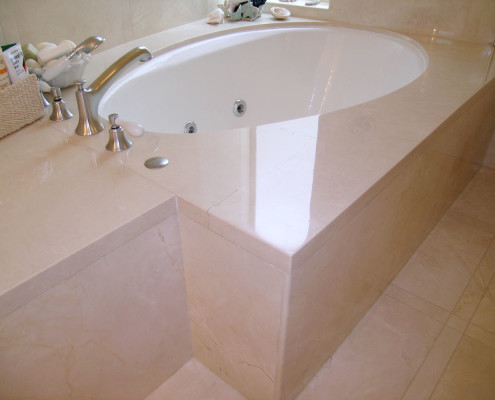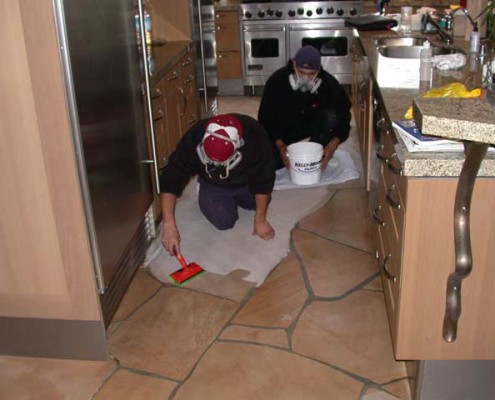Why Seal Your Stone
Natural stone has been formed over millions of years, but improper care can ruin nature’s beauty. Although we usually think of stone as “hard,” it is a porous material that can absorb spills and stains if left untreated. Sealing your stone with a quality impregnating sealer will prevent most spills from damaging your investment. It also greatly reduces the harmful effects of acid and alkaline substances, commonly referred to as “etch marks.”
Etch Marks: Stains on marble, limestone and travertine that are not removable by conventional cleaning or spot removal methods are, most likely, “etch marks.” Substances that are acidic, such as vinegar and orange juice, will “etch” marble, limestone and travertine, whether the stone is sealed or unsealed. High alkaline cleaners like “Windex and “4O9” will also break down sealers and dull polished stone. Etch marks require resurfacing of the stone. (See Stone Restoration.)
Granite, slate and sandstone are not acid and alkaline-sensitive stones, but are porous and also need to be sealed.
Sealing your stone properly will afford you time to wipe up a spill, and will slow the chemical reaction between an acid or alkaline substance and the calcium carbonate in the stone. Our impregnating sealers with new, advanced fluorochemical technology penetrate and protect the stone from the inside without leaving a surface coating that can discolor or attract dirt. Application of this advanced formula sealer and proper care will ensure the timeless beauty of natural stone. (See Tips for Maintaining Natural Stone.)
Coatings like wax and urethane are used as quick fixes and are more of a problem than a solution. These coatings prevent the stone from “breathing” and may yellow light-colored stones, and the chemicals used for stripping the coatings off can damage the surface. These finishes are no answer to imperfections on a stone surface and in the long run may only exacerbate problems. The best approach is to not use coatings at all and to resurface your stone.





